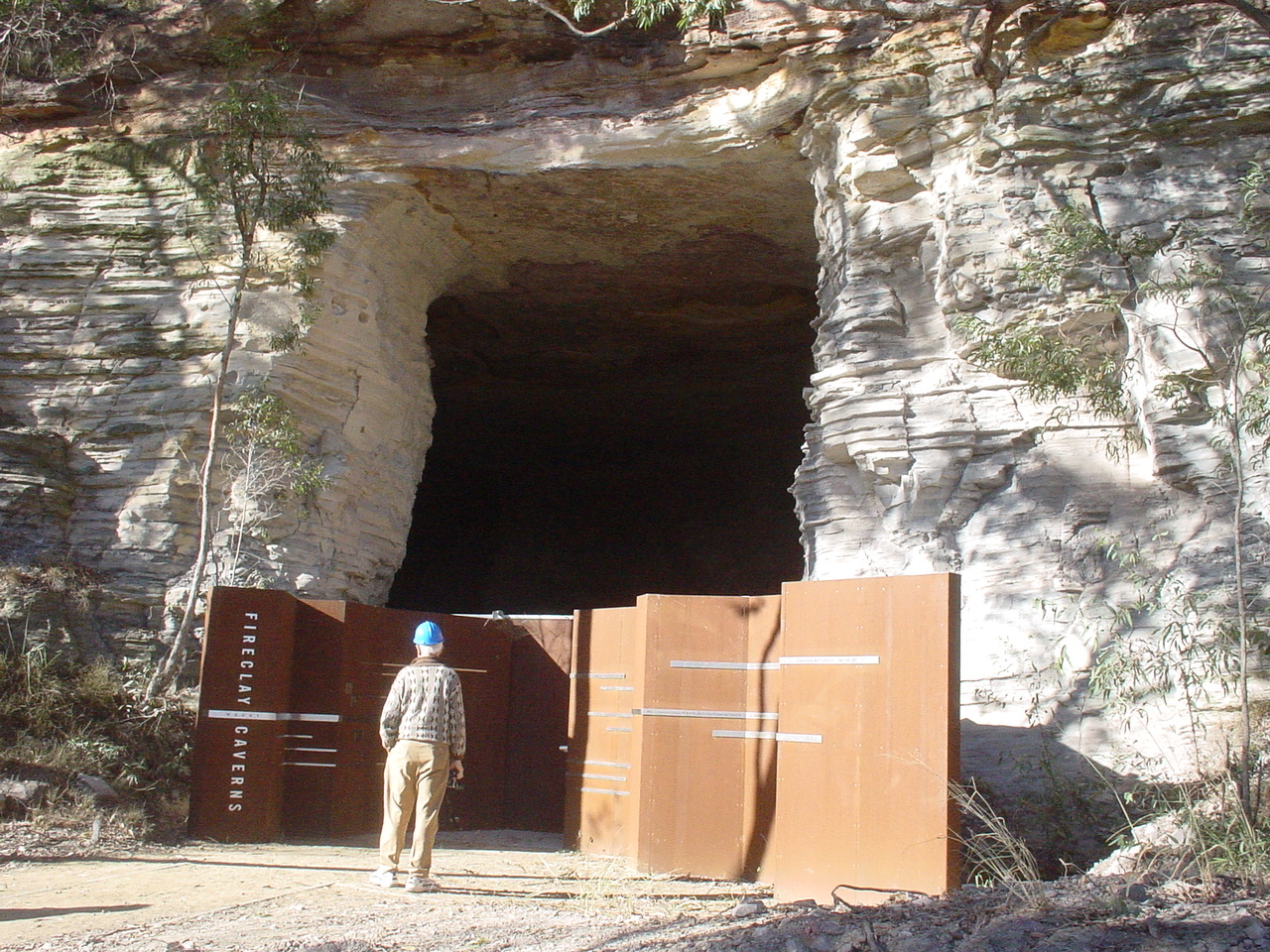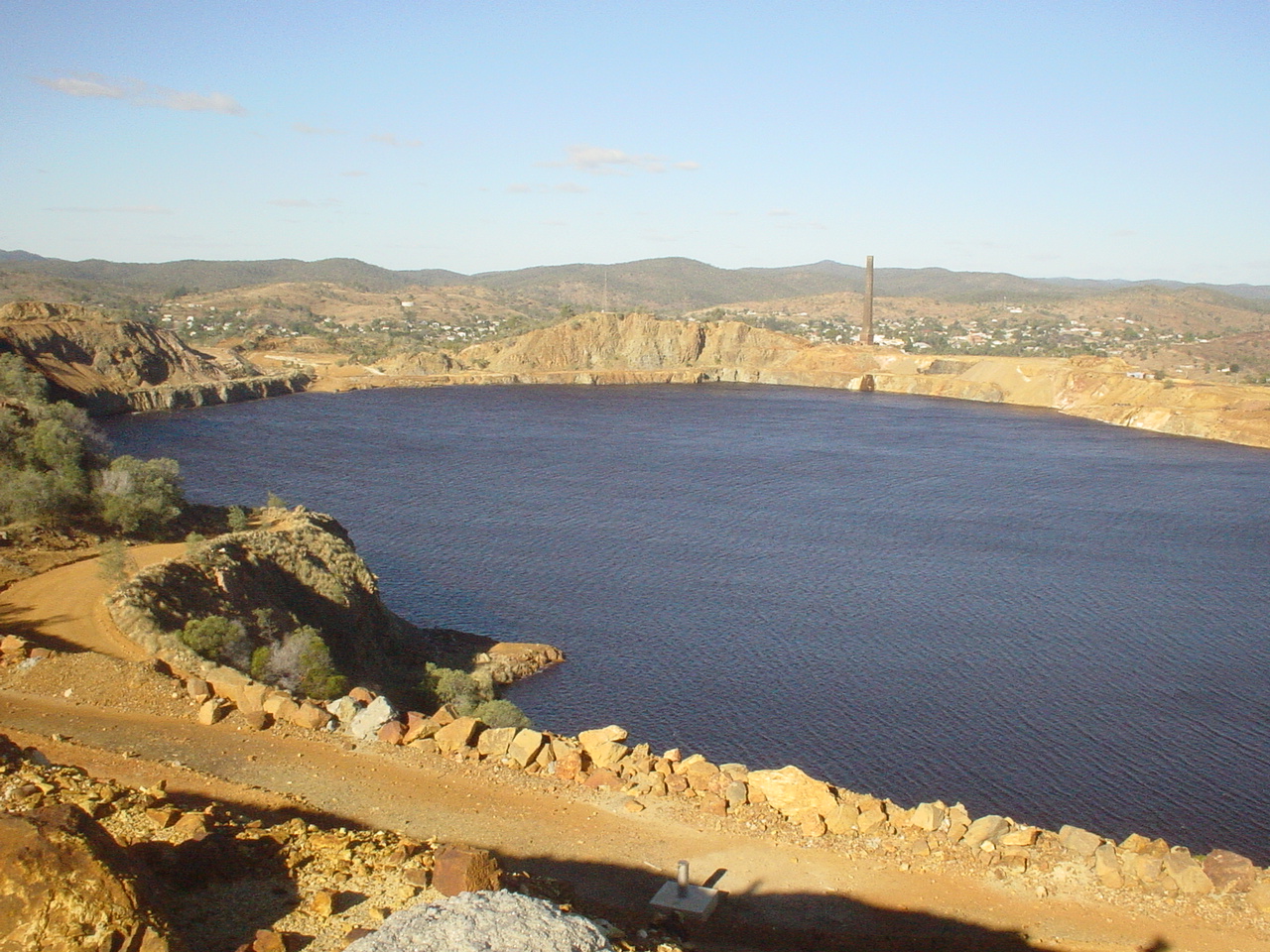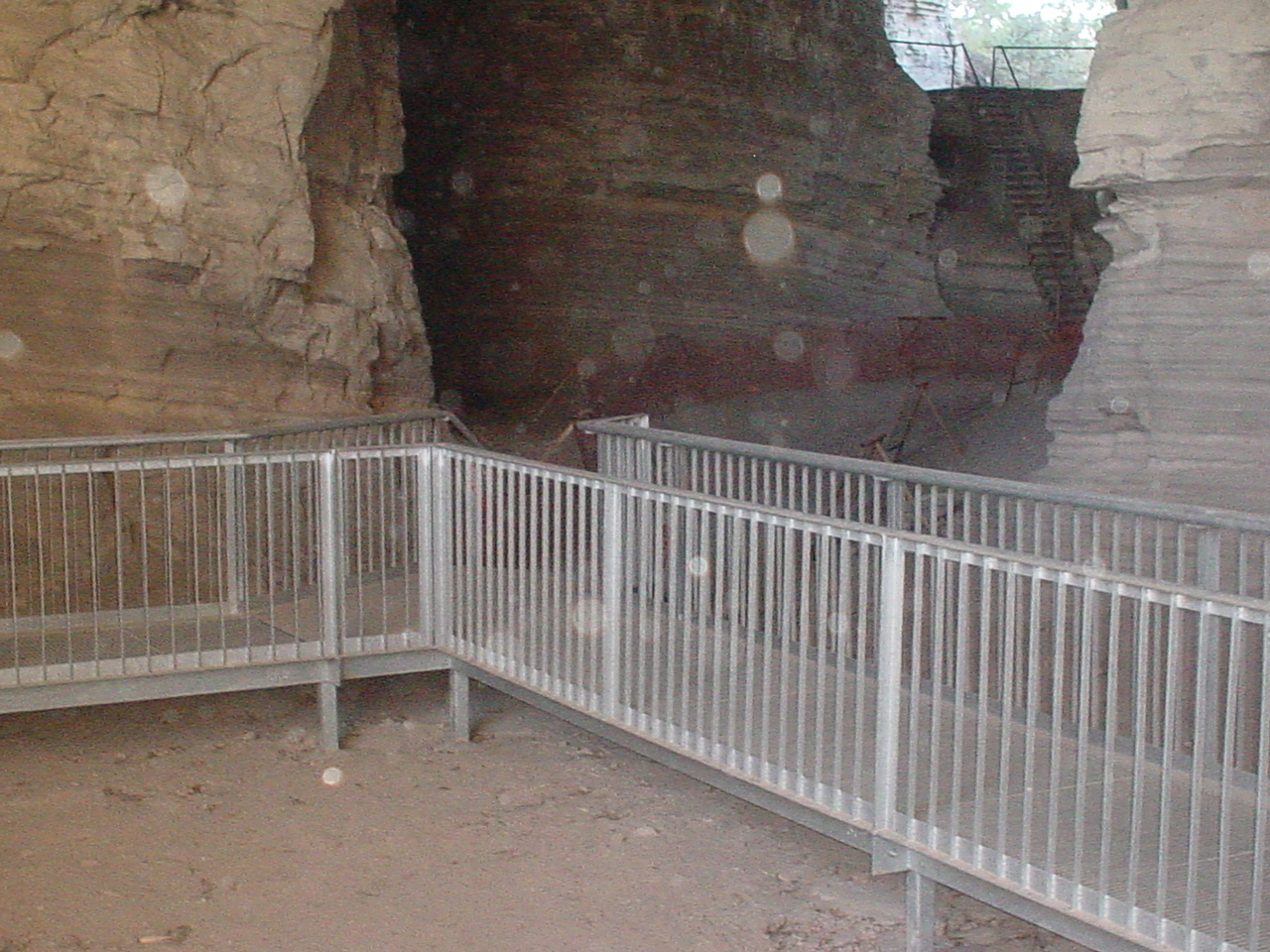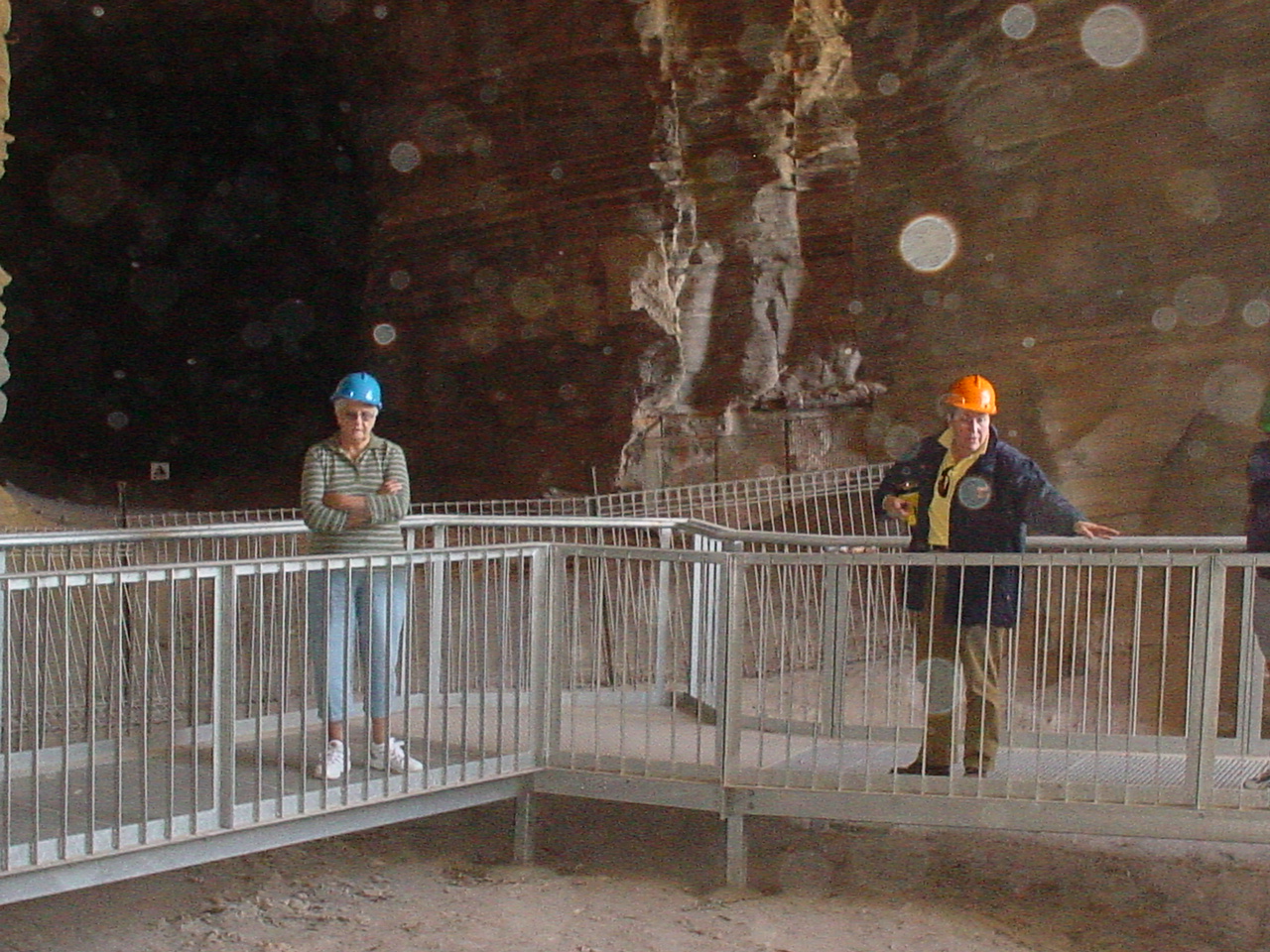It is not often (never!) you comes across a 'new show cave' in Australia - of which you were previously unaware! I had that experience recently during a trip to Rockhampton when I found I had the best part of a day spare, and as a result motored off to nearby Mount Morgan (25 minutes southwest). I had heard of Mount Morgan as an old mining town, and vaguely recalled that it had an old mine site open to the public. Indeed, the town is historic with many fine old buildings well over a century old, and an excellent museum. I rocked up to the Old Railway Station, which is now the tourist centre, and grabbed a brochure. I noted that the tour I was about to book included a visit to the Fire Clay Caverns. Caverns? Caves? Here!?
Indeed! The Fire Clay Caverns are manmade, and were excavated by the Mount Morgan gold mining company between the 1886 and 1925, in an area just to the north of the mine site. The extracted clay was used for firebrick making, and many old buildings in Mount Morgan are constructed from it. The clay was dropped down a shaft and then taken by railway to the site brickworks. There were four brickworks in the vicinity at one stage.
The 'cave hill' contains beds of sandstone and shale, sixty-one metres thick and is part of a deposit of Jurassic or early Cretaceous sediments, which extend several kilometres to the northwest.
Fine grey shale, about eighteen metres thick, forms part of this sandstone-shale bed and it was this material which was mined for the manufacture of the bricks.
 |
 |
 |
The tourist entrance - Fire Clay Caverns |
A cavern view - Fire Clay Caverns |
The water-filled open cut - Mount Morgan mine |
The caves are now open to the public as part of the mine tour, and have been partly developed with raised trackways and infrastructure - to which I will shortly return. The caves have very large chambers and several entrances, so electric lighting is not currently installed as natural light penetrates most of the cave area.
The caves are interesting in themselves, at least to me of course - though possibly not to the bulk of the general public as such. However, their great and unique asset is that they contain Australia's most significant collection of dinosaur footprints. These are located on the roof of the caverns, and number well over one hundred. The footprints are thought to have been made in the soft muddy surface on the edge of a shallow lake, about 200-195 million years ago. The impressions are mostly of three-toed, bipedal dinosaurs - possibly Theropods. It is conjectured that a river course changed and that the sands suspended in its fast flow covered the mudstone and went hard, preserving the footprints.
The larger footprints measure about thirty centimetres in length, have a span of thirty centimetres and show three toes and the ball of a foot. Smaller footprints are less than half this size. It is unlikely that the footprints were visible when mining of the fire clay ceased. It is more likely that erosion has gradually removed the shale layer containing the footprints and exposed the casts of the feet in the overlying sandstone.
The tracks were identified in the 1950s, but little scientific research would appear to have occurred until relatively recent years. As the caverns ceilings for the most part are quite high (averaging about twelve metres from the floor), they are viewed from below at a reasonable distance. While distinguishable, this is clearly not ideal from a tourist perspective. However, there is a smaller chamber near the end of the tourist section called Ladder Hall (presumably because it is accessed by a ladder) where reportedly the ceiling is much lower, and the footprints thus relatively close to a viewer. However, this section is not (yet) open to the public.
The guide on my trip was Georgie Copping, who is second-in-charge of the Mount Morgan Experience, the community based organisation with the sole 'concession' for guiding to the mine and the caves. I suggest readers access their very excellent web site at mountmorganexperience.com.
Georgie is a friendly and enthusiastic guide, though I must say I would have liked to have learnt more of the geology and palaeontology of the site. There is much room for expanding the interpretation given to visitors (though to be fair, I later discovered Georgie had only been guiding for six months).
One thing that struck me about the set up is that there is absolutely zero literature available to the public on the caverns. A booklet to buy would certainly be a seller, but even a cheap explanatory 'giveaway' pamphlet would be a tremendous boon. When I enquired, and introduced myself, after the tour, all the staff could do was to kindly photocopy for me a copy of a palaeontological report - useful and interesting to me, but hardly 'tourist fodder'.
I also thought that requiring tourists to wear hard hats was somewhat unnecessary ... There is probably no chance of this cave inflicting head damage!
 |
 |
Raised steel tracking - Fire Clay Caverns |
Tourists on a walkway - Fire Clay Caverns |
Okay, let's return briefly to the infrastructure. There are a number of steel raised walkways in the caverns, which are excellent, and I was advised they are to be extended further. While there is a lot of natural light in the caverns, and the guide does highlight the footprints as necessary (and it mostly is) with a torch, limited electric spot lighting to achieve the same far more effectively would be most useful. Of course, lack of lighting restricts inspections to daylight hours only ...
If possible, and I am advised it is, I would certainly open the Ladder Hall to the public (and it would clearly need electric lighting). I was made aware there is also a bat chamber in the caves, which is an important wintering site. This is not part of the tour, nor is it necessity or desirable for it to be so - aside from the fact that bats are not a 'drawcard' here.
In short, I wonder if the Mount Morgan Experience realises the potentially tremendous tourist asset they possess? Properly developed and interpreted, and most importantly marketed, it has absolutely massive potential, in my view. It is a truly unique site, and certainly should be available as a stand alone tour, not just as an add-on 'afterthought' to the mine tour.
Incidentally, the mine tour itself is great stuff, and seeing the water-filled old open cut - now a lake of huge proportions, is quite mind-blowing. Georgie's interpretation on the mine tour was excellent, but as already noted, but I believe much more could be achieved with the cavern tour - even as it stands.
REFERENCE:
Cook, A, Hocknull, S, & Spring, K. Report of the Mount Morgan Clay Caverns Dinosaur Footprints and Trackways Site. Queensland Museum, November 2002.